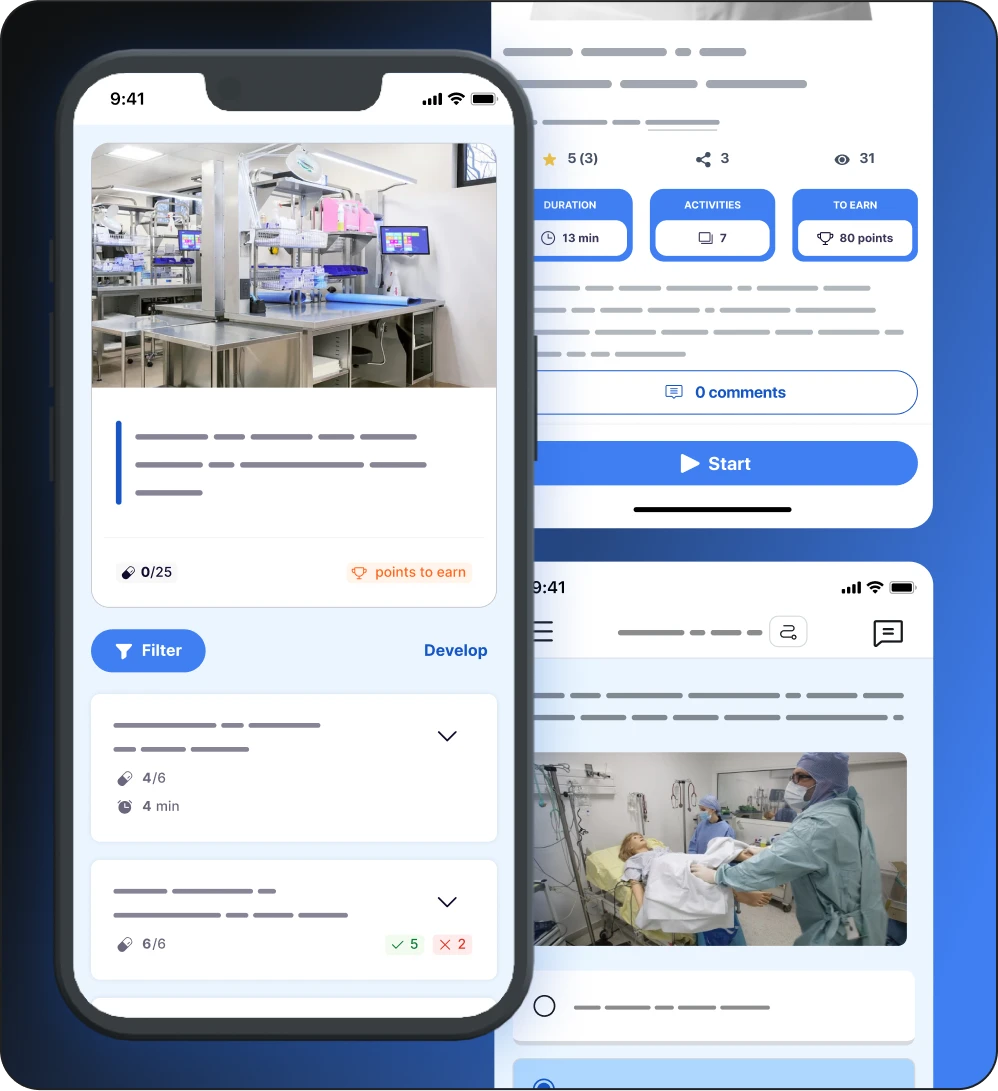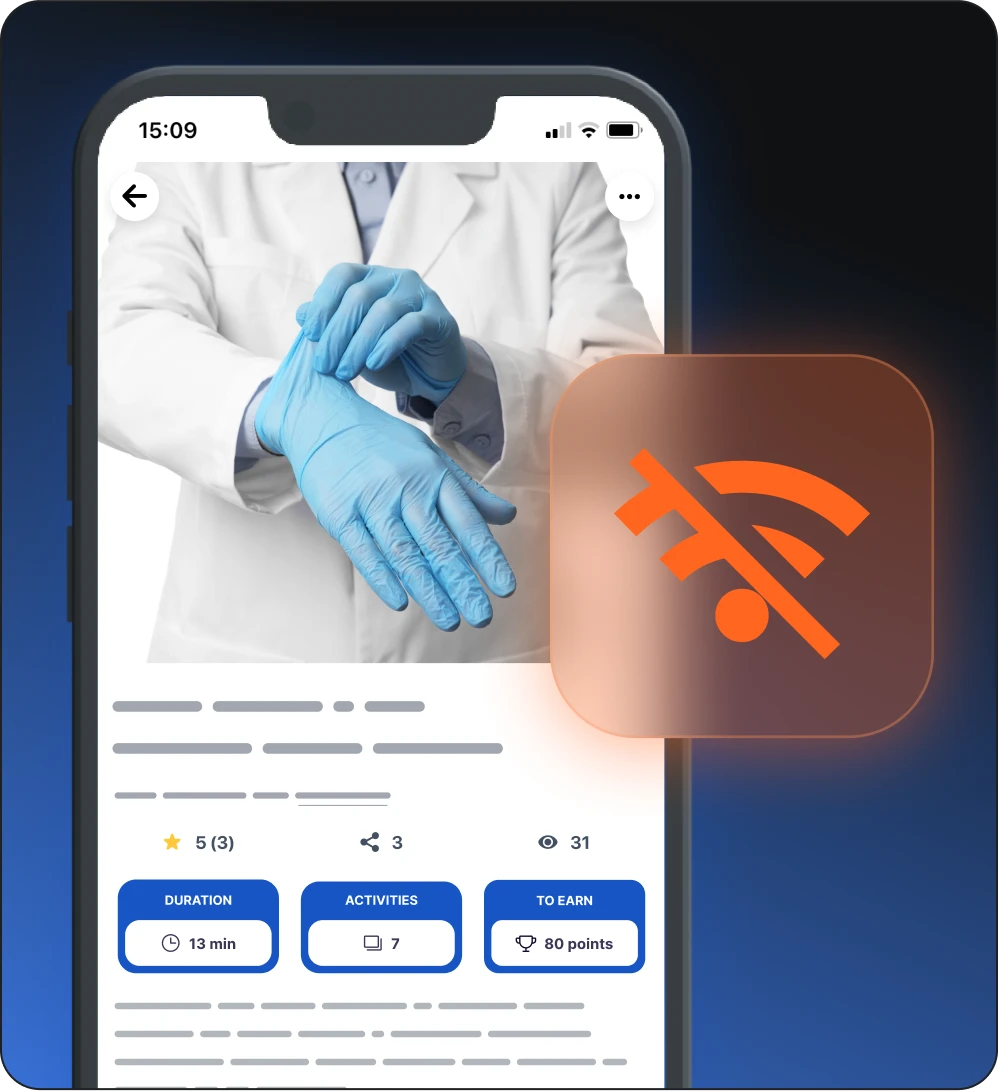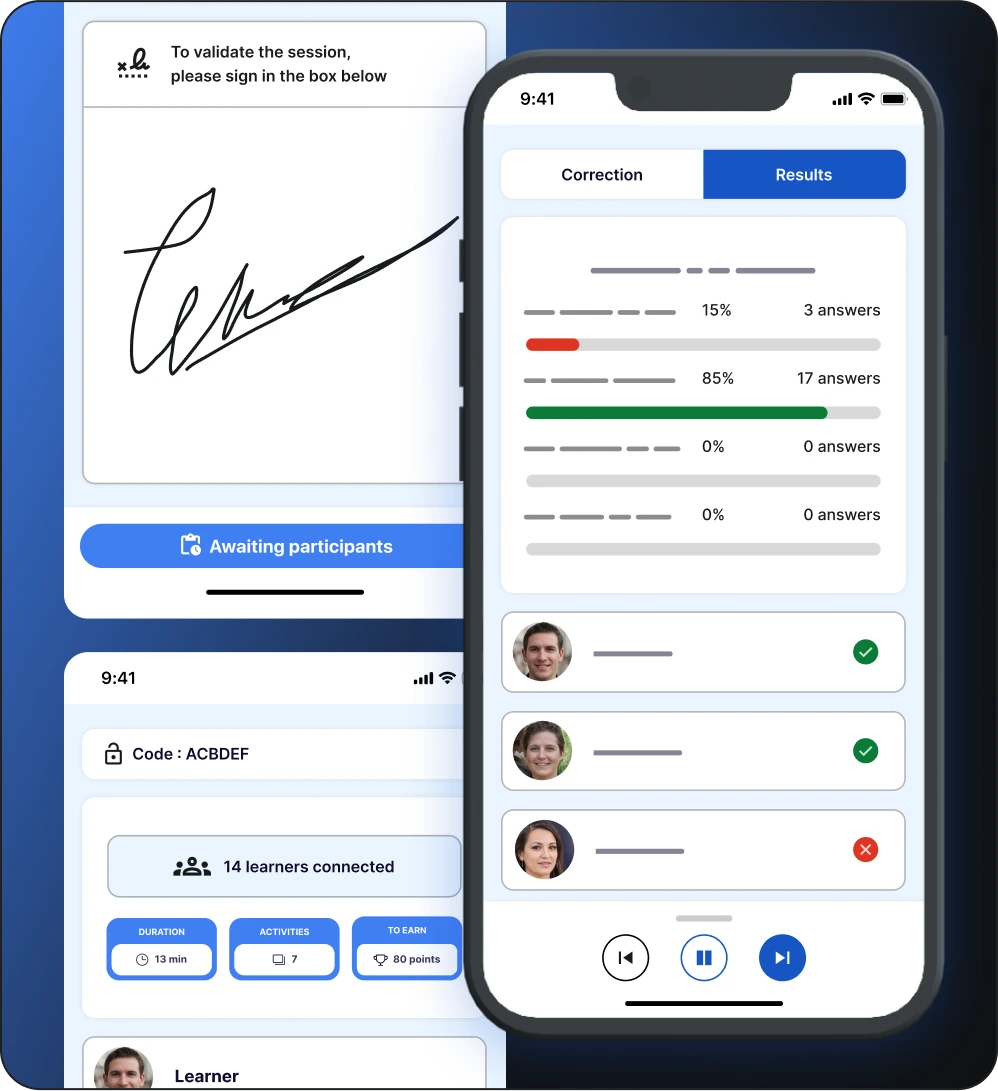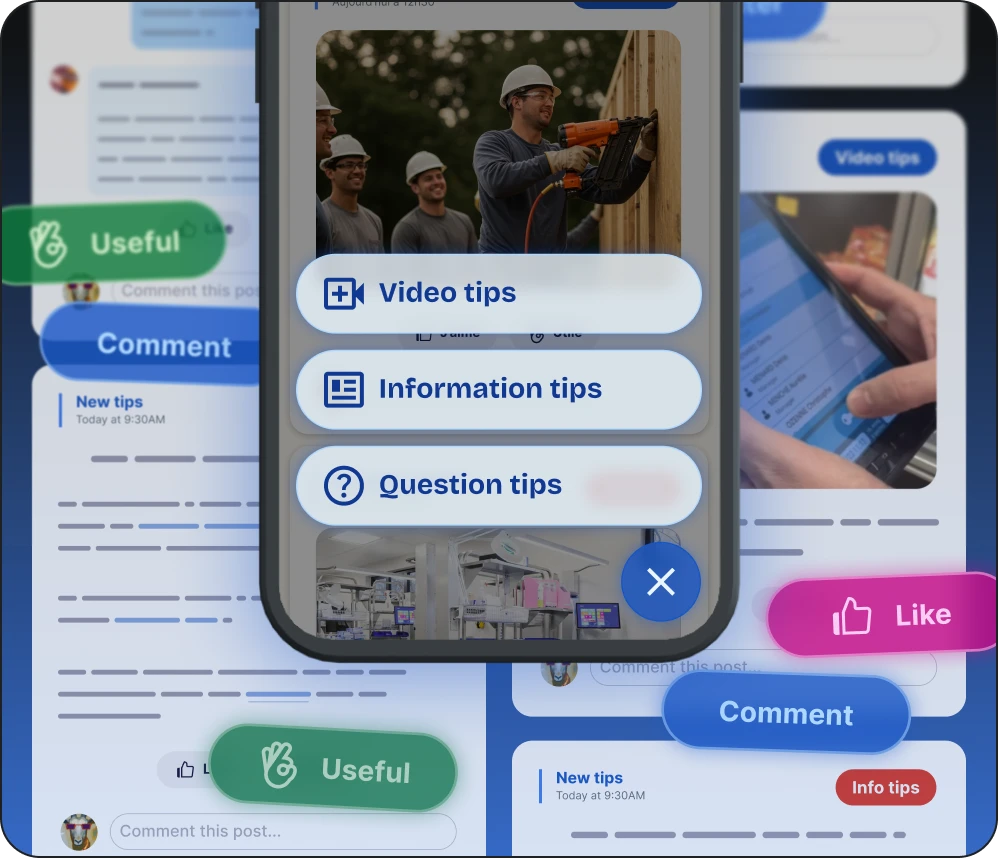Mobile Learning: continuous learning, everywhere and at any time
What is Beedeez Mobile Learning?
Training everywhere, all the time
Accessible content integrated into your everyday work lifeFormats designed for agility
Short and interactive, always adapted to your team's needsContinuous learning
Every moment is an opportunity to develop skills without interruption
The current challenge of training field teams

An approach misaligned with on-the-ground realities
- Long sessions that don't fit into busy schedules
- Content disconnected from immediate, practical needs
- Low retention from bulk information delivery
- High logistical costs for in-person training

“Deskless” employees left out of the learning loop
- Sales teams, technicians, logistics staff: a large part of the workforce without regular computer access
- Limited access to training resources while on the move
- A lack of tools suited to time constraints and working conditions

Untapped downtime and missed learning opportunities
- Available moments not leveraged for training
- Inability to learn at the moment of need
- Poor knowledge retention due to lack of repetition
Our mission
Transform every available moment into a learning opportunity through a fluid, engaging, and integrated mobile experience
Innovative formats at the service of commitment
An intuitive interface designed for small screens
Seamless browsing
Natural and immersive user experience
Optimal readability
Typography and layout adapted for mobile reading
Smart media management
Loading and reading optimized for mobile bandwidth
Accessibility
Adaptated to WCAG standards (automatic subtitles, audio description, contrast management, font size, etc.)

Creating and sharing knowledge in the field
Video tips
Capturing, assembling and disseminating know-how in real working situations in a few simple steps
News tips
Instant sharing of business information and news directly from the field
Tips questions
Questioning open to the community to obtain targeted answers or recommendations for relevant content
Practical validation of knowledge
Realization and certification of professional actions in a work situation with validation in the application

Native gamification
Micro rewards
Badges and points to maintain daily engagement
Fun challenges
Friendly duels between learners via the mobile application
Valorization of performances
Learner rankings by groups, by store...
.webp)
How Mobile Learning is revitalizing learning
Modular approach
Unitary knowledge capsules
Perfectly adapted to lulls in the day
Sequenced paths
Intelligent division of complex subjects into engaging and digestible units
Highly interactive formats
Quizzes, flashcards, videos, micro-tasks, etc.
Spaced and dynamic repetition
Optimization of long-term memory anchoring and the development of learning habits

Maximum availability
Full offline mode
Learning possible even without an internet connection
On the go
Audio-learning for mobility situations
Smart sync
Automatic update upon reconnection
Cross-device experience
Perfect continuity between mobile, tablet and desktop
Targeted notifications
On mobile only or with an email
User Preference Center
Simplified configuration allowing each learner to define the type of notifications

A solution specially designed for field employees
Proximity management
Interface dedicated to managers
Team monitoring directly from the field
Mobile dashboards
Access to key team performance indicators
Targeted communication
Personalized messages and reminders
Mobile validation
Electronic signature of sessions and validation of achievements in the field

Coaching and continuing education as close as possible to the need
Structured coaching
Individual support with milestones to follow on mobile
Monitoring of field missions
Real-time sharing of tasks assigned by the coach and validation by tips
Contextual resources
Immediate access to content relevant to the problem-situations encountered
Sessions
Animation of collective learning sequences directly on site

A platform embraced by all fields
Administration for large groups
- Multi-entity management with separate configuration by subsidiary
- Multilingual support for international administration
- Scalable architecture that supports millions of users
- Enhanced security and compliance with corporate standards
Management of networks and brands
- Centralized administration with deployment and access management
- Comparative dashboards between points of sale
- Effective management of seasonal workers and turnover
- Controlled distribution of content to the various entities
Solutions for SMEs and training organizations
- Fast deployment without dedicated technical resources
- Personalized administrative support
- Scalability without major reconfiguration
- Optimized costs and budget visibility
Reinvent your daily training with Beedeez
These companies rapidly develop skills in the field
A perfect integration into your training ecosystem

A unified platform for learning
Continuity of experience
Seamlessly transition between different learning contexts
Secure SSO
Manage all of your training initiatives through a single entry point
API connection
Connect your entire HR ecosystem (Slack, Teams, Google Groups, BI platforms)

Social learning enrichment
Mobile communities
Facilitate learning groups from the application
Contextual sharing
Disseminate knowledge captured in real situations
Asynchronous interactions
Questions and answers adapted to field constraints
Valorization of experts
Identify talent directly from the field

Extend your author tool
Mobile-native formats
Create optimized content for smartphones
Mobile preview
Immediately preview the rendering on a small screen
Usage analytics
Precise measurement of engagement with mobile formats
Your frequently asked questions
How do we manage the diversity of mobile devices within our organization?
Our solution is fully responsive and compatible with all smartphones on the market, including iOS and Android. We also provide maintenance for multiple versions of these operating systems. For companies that provide devices to their employees, we offer deployment options via MDM (Mobile Device Management) for simplified large-scale installation and management.
Can mobile learning really address complex and technical subjects?
Absolutely. Our approach intelligently sequences complex topics into coherent modules while maintaining the big picture. Our customers successfully use Mobile Learning for technical training, such as industrial maintenance and technical procedures.
How can the effectiveness of mobile learning be measured compared to traditional formats?
Our platform integrates advanced analytics that measure completion, frequency of use, and learning moments. Our team of expert consultants will work with you to define and monitor performance indicators aligned with your goals.





